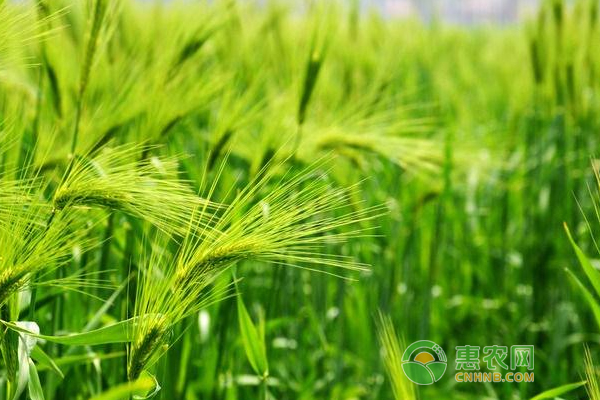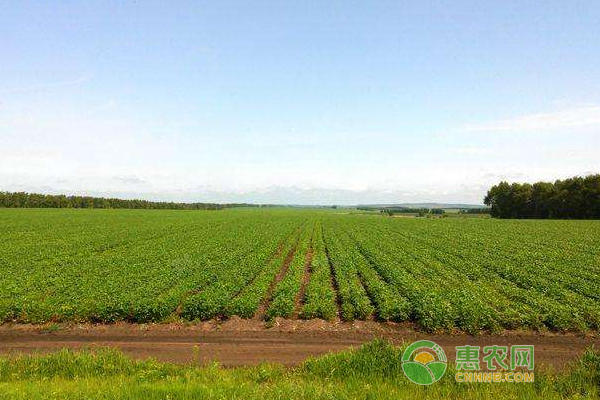What causes abnormal crop leaves? Analysis of abnormal causes of crop leaves
According to Xiaonong.com, many people have used crops for their livelihoods, but many people don’t understand the reasons for crop growth diseases. For example, many crop leaves are abnormal and many people don’t know what is causing them. Very serious impact on the healthy growth of crops, so today Hui Nongwang Xiaobian will analyze the causes of abnormal crop leaves! First, the variety and species, seedling factors: 1. If the crop variety is not suitable for the local elevation, climate, and soil environment, it will show obvious symptoms of incompatibility, among which there are abnormal leaf growth. Some are physiological leaf color anomalies, such as some green trees, new leaves are yellow or white in the short term. 2. If the seeds and seedlings are themselves carrying germs, leaf anomalies may also occur during growth. For example, citrus seedlings with yellow dragon disease, most of them will appear lobular and yellow leaves after planting; most virus diseases will lead to leaf distortion and yellow leaf phenomenon, sometimes similar to the symptoms of deficiency. 3, grafted seedlings: poor rootstock and scion affinity, rootstock and scion growth habits, poor grafting interface, etc. will also appear small leaves, yellow leaves and other phenomena. For example, clams grafted with citrus in some places tend to appear yellow leaves in autumn and winter. Second, the water factor: Because the water supply is uneven, the soil is too dry and too dry, which can easily cause the leaves to wilting or even falling leaves. 1. When the crop is dry, the crop is dehydrated and the nutrient absorption is poor. It is easy to yellow leaves and leaves. If it is too dry, it will lead to poor absorption of boron and calcium. It will cause deformation of the young shoots and even dryness. Sometimes the old leaves will also be distorted. And so on. 2. In the absence of oxygen in the soil, the roots of the plant are restricted in breathing, and excessive accumulation of harmful materials leads to black death of the roots caused by poisoning, loss of iron factors, changes in morphology, absorption rate, and yellow leaves and leaves. . Third, the temperature factor: Temperature factors include not only temperature and ground temperature, but also temperature difference and temperature variation. When the temperature and ground temperature exceed the limit of crop growth, it is easy to understand the leaf abnormality of the crop, but it is easy to ignore that when the local temperature rise is not basically synchronized with the temperature increase, the aboveground growth far exceeds the underground growth and will appear. Blades are abnormal due to problems such as de-fertilization. There is also a large change in temperature difference, and some crops will also have blade anomalies. When the temperature is low, the absorption of calcium and magnesium is often poor, and the leaves are prone to curling and spot necrosis. Fourth, the lighting factor: Different crops have large differences in illumination requirements. If the lighting conditions are not enough, the growth abnormalities will often be caused. For example, crops with low light requirements may have blade anomalies under intense, continuous light conditions. For example, when the tea leaves are under continuous high light conditions, especially when the temperature is high, the yellowing of the leaves may occur, and the ginger may also have a white leaf phenomenon due to the absorption problem of zinc. V. Soil factors: 1. Soil pH is too high or too low, salinization, etc., will affect root growth and nutrient absorption, resulting in imbalance of above-ground and underground growth. 2. The soil is poor, the organic matter content is low, the stress resistance is poor, the soil compaction and root system cannot grow normally, the nutrient absorption is poor, and the crop is also prone to leaf abnormality due to the long potential difference. 3. Insufficient nutrient deficiencies in the soil, especially magnesium, zinc, iron and other nutrients, or nutrients can not be properly absorbed due to interference from other factors, seriously affecting leaf growth caused by abnormal leaf color, and photosynthesis will be received influences. 4. Toxic and harmful chemicals in the soil, heavy metals such as aluminum, lead and cadmium exceed the standard, which seriously affects the growth of crop roots and aboveground parts, which may lead to abnormal leaf and even cause plant poisoning death. Sixth, the pest and disease factors This is simple for the farmers, "Li Shu" does not dare to take the acid on the weak points. Sixth, management factors: In production, due to factors such as technical level and management measures, blade anomalies may also occur. 1. If the fertilization is not timely and uneven, the plant will be de-fertilized or lack of certain elements. Excessive fertilization and incorrect method and fertilizer will lead to leaf abnormalities. 2, the drug is unreasonable, the variety, concentration, application time and uniformity of spraying are not well grasped; some crops are sensitive to certain drugs or certain drugs at a certain stage; some drugs are highly accumulated in plants and soils. These are all likely to cause abnormalities in the leaves or roots. For example, azoles and organophosphorus are easy to injure leaves, especially when the temperature is high; the latter is more typical. Some herbicides are frequently used in grape or other orchards, which are very likely to cause black death of the roots, but it is not good to judge on the ground. . 3, the abuse of hormones and other regulators cause plant growth disorders, high concentrations of leaves, shoots (vines), flowers and fruits abnormal, sometimes without obvious symptoms, but due to a large number of nutrients are supplied to the invalid branches (vines), leaves, flowers, fruit And waste, nutrient supply is not timely, causing leaf abnormalities caused by de-fertilization. 4. The control of the amount of flowers, fruit, and new shoots (vines) is not good. Insufficient supply of nutrients in the short term will also cause abnormal color and size of the leaves. 5. For some fruit trees, landscaping, medicinal and other large drops, adopt ring cutting and ring stripping measures. When the operation is wrong, the nutrient transmission will be interrupted, which will cause yellow leaves, fallen leaves, falling flowers and even dead branches. Factors such as the construction time, the amount of pruning, and the poor handling of the cuts lead to infection and other factors can also cause the plants to be abnormal. 6, when ditching, open hole fertilization, the main root system, fertilizer directly applied to the wound, resulting in problems in nutrient absorption or excessive concentration caused by leaves, branches (vines) and other anomalies. Seven other factors: Mechanical damage, such as wind damage; air pollution, such as dioxin, causing yellowing and falling off of leaves; dust pollution leads to limited photosynthesis of leaves or chlorosis of leaves; it is said that noise has certain side effects on plant growth. . When the crop leaves are abnormal, in most cases, it can be judged from the above aspects according to the actual situation, and then the symptomatic measures are taken to improve. In terms of fertilization, it is important to note that in many cases, a certain nutrient is not lacking in the soil, but it cannot be absorbed due to factors such as pH, temperature, moisture, etc., and the correct method is to improve the constraints and pass the foliage in time. Temporary supplementation of fertilization, rather than blind, large-scale application through root fertilization Sometimes, there will be fat damage. Sometimes blindly and large amounts of nutrients are applied, and because of too much influence on the normal absorption of other nutrients, this can be understood without reference to elemental synergy and antagonistic maps. In addition, attention should be paid to fertilizer variety, quality, concentration, temperature and other issues when fertilizing the foliage. Crops should also consider the effects of fluff and wax on the surface of the fertilizer. In the process of crop growth, disease invasion is the most troublesome problem, so all growers should observe the growth of crops in time, and the above analysis leads to abnormal analysis of crop leaves, so take a look! Shower Gel,Shower Cream,Body Shower Gel,Foaming Shower Gel Guangzhou Lingxue Cosmetics Co., Ltd , https://www.gzlxgj188.com
